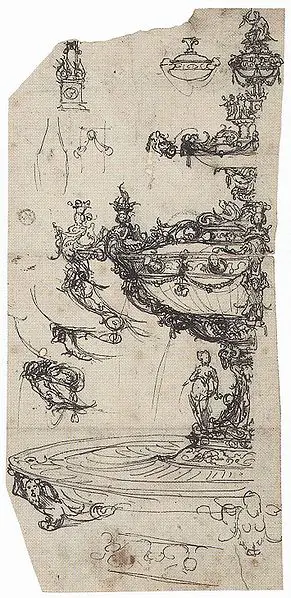 Happy New Year to you all. I hope you all had a lovely Christmas and that 2014 brings you love, happiness, success and as many good things as possible.
Happy New Year to you all. I hope you all had a lovely Christmas and that 2014 brings you love, happiness, success and as many good things as possible.
Although the Tudor New Year did not begin until 25th March, upper classes exchanged New Year’s gifts on 1st January. Tudor poet Thomas Tusser wrote about gift giving, saying, “At Christmas of Christ many Carols we sing, and give many gifts in the joy of that King.”
Historian Alison Sim writes of how gift giving was treated very seriously at the Tudor court, and that gifts had major political significance. There are still records today outlining the instructions for the reception of gifts at the court of Henry VIII. After the King dressed in his chamber, one of the Queen’s servants would bring him a gift from the Queen, and then he would receive gifts from other courtiers. While he was doing that, the Queen would receive gifts in her chamber.
The way that a monarch responded to a person’s gift was very telling of who was in royal favour. In 1532, Henry VIII refused Catherine of Aragon’s gift, while accepting the one from Anne Boleyn, and Elizabeth I famously refused the Duke of Norfolk’s gift of a beautiful jewel in 1571, because he was in the Tower of London for being involved in a revolt against the crown. A monarch was meant to respond to gifts by giving the giver something in return, and it was expected that they would give them something more expensive than the item that had been given to them.
Here are a few of the gifts that were exchanged between Anne Boleyn and Henry VIII at New Year:
- New Year 1532 – Anne gave Henry “an exotic set of richly decorated Pyrenean boar spears” and Henry gave Anne hangings of cloth of gold, cloth of silver and embroidered crimson satin for her room and bed. The King refused the gold cup sent to him by his wife, Catherine of Aragon.
- New Year 1533 – From Henry to Anne: “parcels of gilt plate, late of Sir Henry Guldeford, controller of the Household :—2 gilt pots with round knobs behind the lids, which came to Sir Henry as executor to Sir William Compton, weighing 133 oz. ; a pair of gilt flagons with the arms of France, 147 oz. ; 6 gilt bowls without a cover, 200½oz. ; 3 gilt salts with a cover of Parres touch,” which belonged to Sir Will. Compton, 77 oz. ; 12 gilt spoons with demi-knops at the end, 18 oz. ; a pair of parcel-gilt pots, 99½ oz. ; another, 97¾ oz. ; another, 71 oz. ; 6 parcel-gilt bowls without cover, 199¼ oz. ; the cover of the same, 19¾ oz. ; a basin and ewer, parcel-gilt, 77 oz. ; another basin and ewer, parcel-gilt, 64 oz. ; 11 white spoons with roses at the ends, 20¼ oz. ; 4 candles, white, with high sockets, 86½ oz. ; “a round bason of silver for a chamber, and a silver pot to the same, weighing together 138½ oz.” ; and a chafing dish, parcel-gilt, 39¾ oz.”
- New Year 1534 – From Anne to Henry: “A goodly gilt bason, having a rail or board of gold in the midst of the brim, garnished with rubies and pearls, wherein standeth a fountain, also having a rail of gold about it garnished with diamonds; out thereof issueth water, at the teats of three naked women standing at the foot of the same fountain.” Anne Boleyn commissioned this rose water silver-gilt table fountain from Hans Holbein the Younger.
Here is Holbein’s design for the table fountain:

Notes and Sources
- Pleasures and Pastimes in Tudor England, Alison Sim
- The Life and Death of Anne Boleyn, Eric Ives, p148
- LP vi. 6
- LP vii. 9